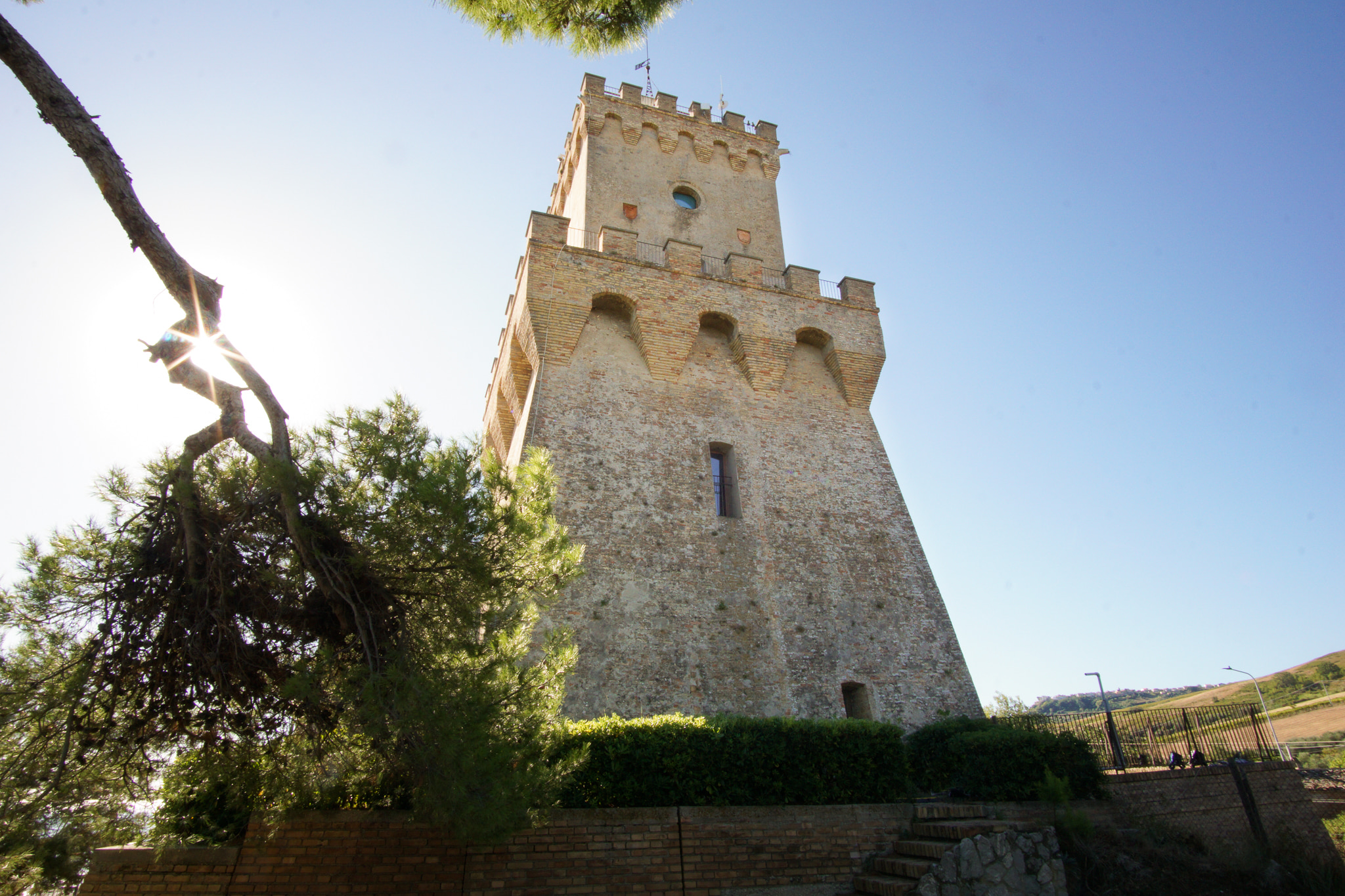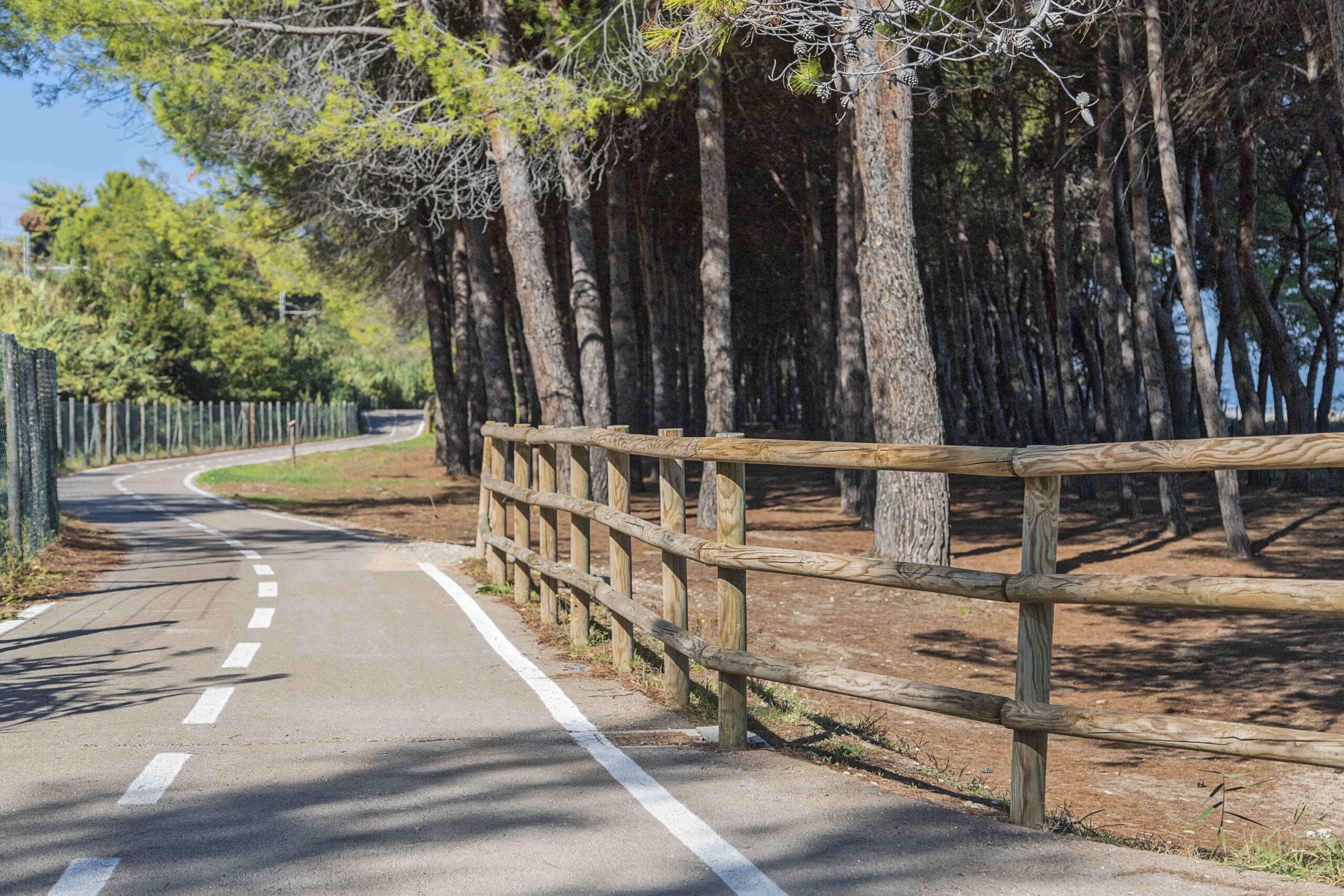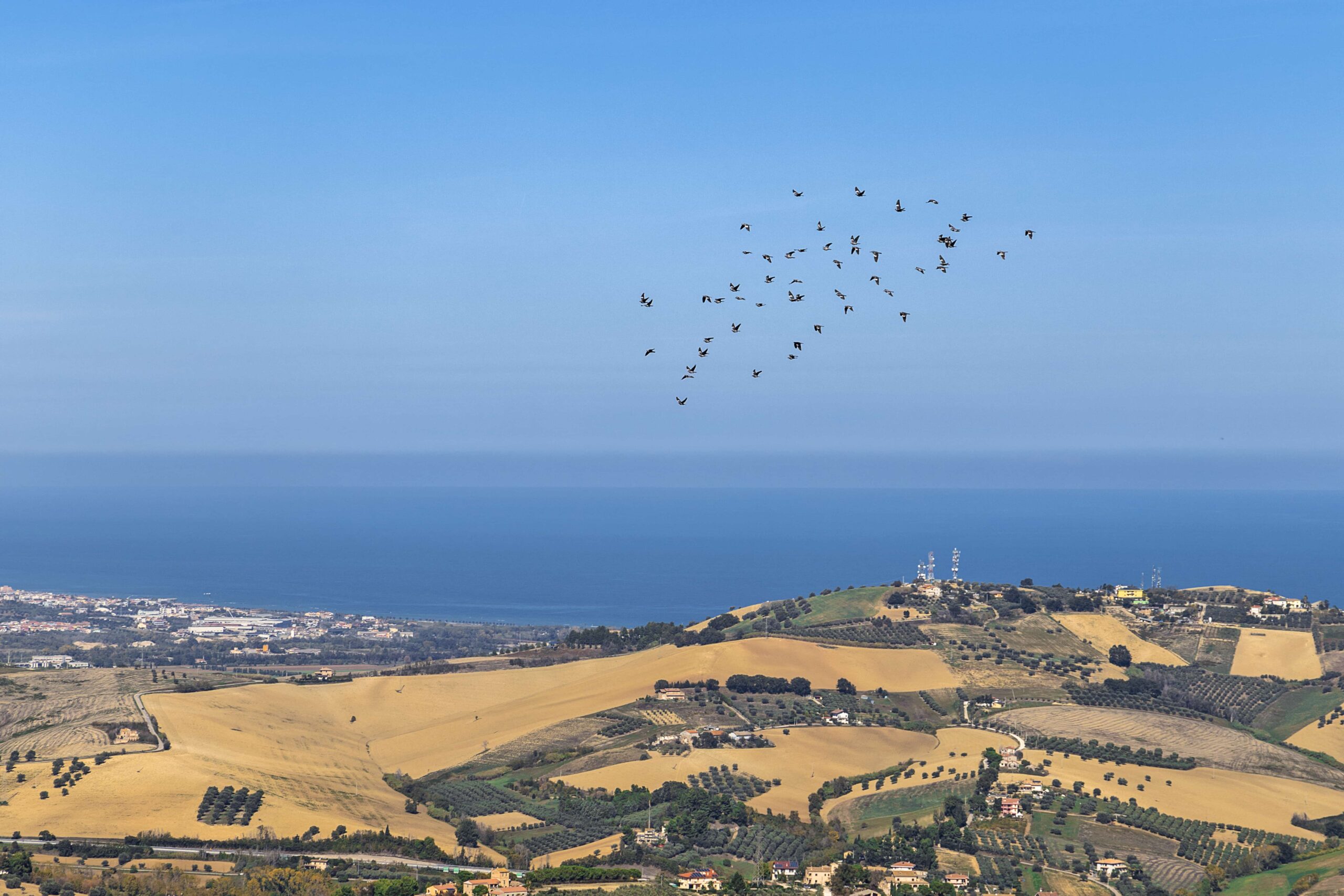Filiani would also change its name to Pineto, inspired by d’Annunzio’s poem ‘La pioggia nel Pineto’. With its plants, which line the seafront, it creates an ideal microclimate for outdoor sports – well-deservedly awarded the Blue Flag, Green Flag and Yellow Flag.
Villa Filiani, located in the centre of Pineto and constituting its first nucleus, was the holiday residence of the Filiani family, built in 1844; today it houses the Centro Etnomusicologico d’Abruzzo (Ethnomusicological Centre of Abruzzo), a point of reference for the preservation and promotion of the music of the Abruzzo oral tradition.
On your walk, an unmissable stop will be the Cerrano Tower, which stands on the coast and can also be reached from the cycle path. Built by the Spaniards in the 16th century as a defence outpost and renovated in the 1990s, it is home to the Cerrano Marine Protected Area and houses the Museum of the Sea, which reproduces the path from the seabed to emerging from the sea, passing through the Hall of Shells, Biodiversity and Dolphins.
The beach in front is characterised by a dune area, designed to protect the fratino bird and Mediterranean flora, such as the sea lily and Gargano mullein. In the water, you will recognise the ancient submerged structures belonging to the Roman port of the city of Hadria.
One of Pineto’s natural uniquenesses is also the ‘Cenerone’, a small mud volcano included among the geosites of the Abruzzo Region, created by the spontaneous rising to the surface of hydrocarbons, clays, liquid mud and salt water that accumulate to form a conical emergence inside the crater.
From the coast, now climb a few kilometres towards Mutignano, Borgo Autentico d’Italia (Authentic Village of Italy), which represents the historical roots of Pineto, for a pleasant walk through the alleyways surrounded by gullies, the result of the work of water on clay rocks. Once in the historic centre, take a break in the Castellaro Park which, among ancient trees, paths and belvederes, is a meeting place that also hosts numerous cultural events.
Here, stop to visit the Church of San Silvestro Papa: with Romanesque origins, it is made of brick, with an octagonal spire bell tower in the centre of the façade, restored in 1350. The single-nave interior has side chapels and a wooden truss ceiling.
Before leaving these places, take the opportunity to savour the brodetto alla pinetese, a simple but ancient dish prepared with fresh fish – sole, red mullet, prawns, squid, mussels and clams – extra virgin olive oil, red pepper, bay leaves and fresh chopped tomatoes, the ingredient that distinguishes this one from other brodettos on the coast.










